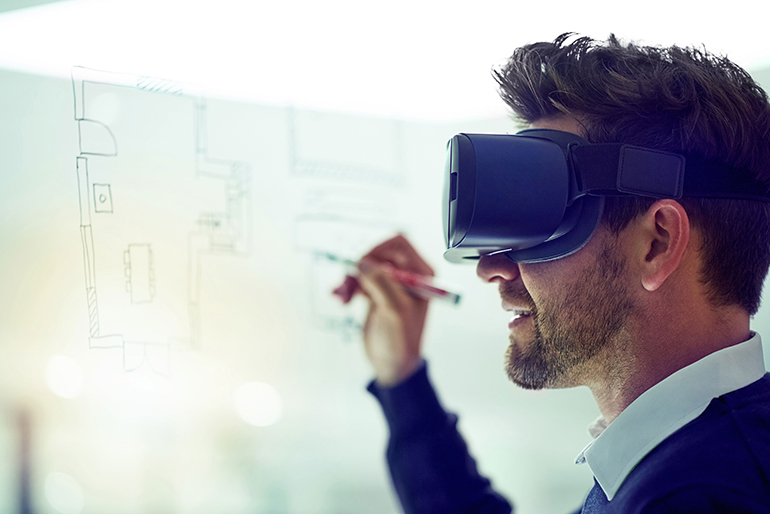
For engineering project management teams, time is money. With this in mind, civil engineering master’s student Morgan Boudier and four other Aggies developed a novel solution: save teams time and money with the use of specialized augmented reality software that can tell them if a project is on track.
Boudier and four other students developed this software through the November 2017 Aggies Invent challenge. Sponsored by Dell, students were challenged to develop the next generation in augmented reality or virtual reality software, wearable devices and other platforms.
“Before the event, I already had an interest in the area of virtual reality,” Boudier said. “I think it is a good way to cut cost in the industry, so what we had done is develop a software on Unix that will let a project manager track costs and losses due to project delays on construction management projects.”
The software Boudier and his colleagues developed in 48 hours was specifically designed to assess walls. The software enabled a user, through a virtual reality headset, to survey a wall in front of them. Then, looking at the wall, the user can directly compare the architectural model developed for the structure on the headset to the wall in front of them to see if it is completed yet, if there are complications, and what cost there would be due to the lost time.
“With the headset, the engineer can directly see what is going on onsite, and this visual can be sent [directly] to the project manager,” Boudier said. “The idea was that you lose a lot of time with meetings and reporting, so the headset can be used to speed up this reporting by allowing you to be on site. Also, with the headset you can video stream with an expert and ask them questions in the field instead of having to gather people together for a meeting, so you’re saving both time and money.”
The software that the team developed was designed to be applied to walls, but has the potential for other future applications. The team that developed the software consisted of Boudier, two mechanical engineering students, a computer science engineering student and a student from the Mays Business School.
“It was a pretty diverse group, which was a good thing to see,” Boudier said. “I think working with these people from different backgrounds gave me some self-confidence about working as a part of a team and helped me see that I could contribute good ideas for the betterment of the group.”
A French native, Boudier said part of what drew him to pursue his master’s education at Texas A&M University was the hands-on engineering experiences like Aggies Invent that focus on real world challenges. The upcoming Aggies Invent experience, “Invent for the Planet”, will take place this month as a part of a worldwide event that challenges students to tackle global issues such as human rights and resource conservation through product innovation. Reflecting on his time as a previous participant, Boudier said the experience was well worth it and encourages others to be a part of the competition.
“I think the winners of the Aggies Invent are always the people with the best ideas,” Boudier said. “I think it shows that those with the best ideas succeed, and that you have to spend some time letting it develop in your mind, it doesn’t just happen. If I could do this again I would, it’s a great experience.”
